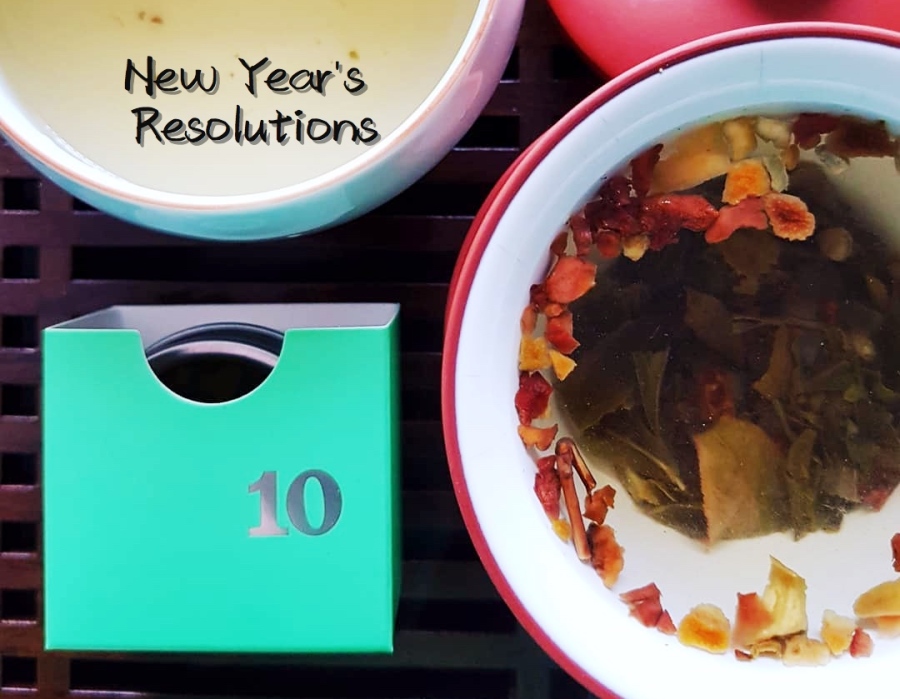Something I’ve been working on as part of my slow living ideals is slowing down my meals and being more mindful of the overall eating experience. So this year, I decided to bring my mom to an upscale Japanese restaurant in Toronto to celebrate her birthday and early Mother’s Day. Seafood is one of our favourite foods of all time, and if you’re like us, I would totally recommend this experience to you!
Moriawase (盛り合わせ) translated directly from Japanese, means an assorted platter of sushi or sashimi. Per the restaurant’s description, this platter would feature items recommended by the chef, or whatever fish is fresh that day. I’m sure a lot of restaurants in Toronto offer the omakase experience as well, but I chose this restaurant because a lot of my friends recommended it and I read somewhere that a lot of their ingredients are imported from Japan. Details at the end of the post.
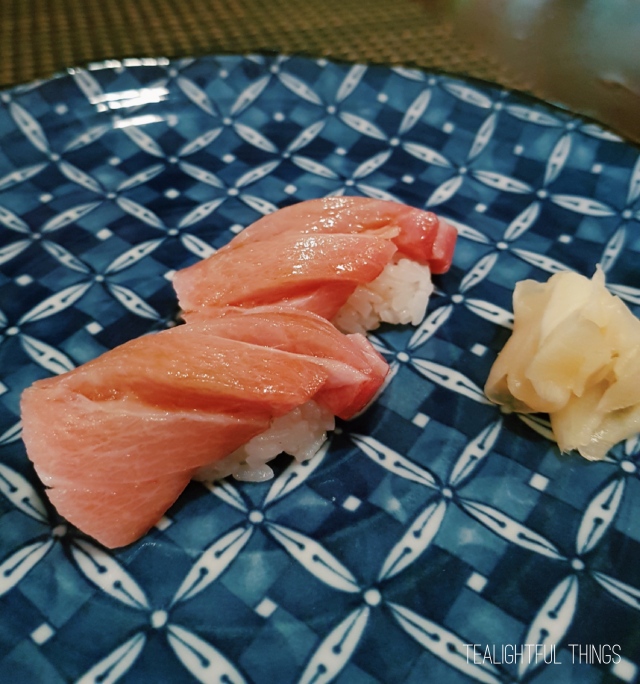
The first thing we actually ordered was the o-toro, which is a highly-prized fatty underbelly meat of the bluefin tuna. This was ordered separately… but it was toro so we just couldn’t help it! From the picture, you can see the even fat distribution, which is what contributes to the buttery, melt-in-your-mouth texture and the iconic umami taste. It’s so soft it even looks like it’s falling apart!
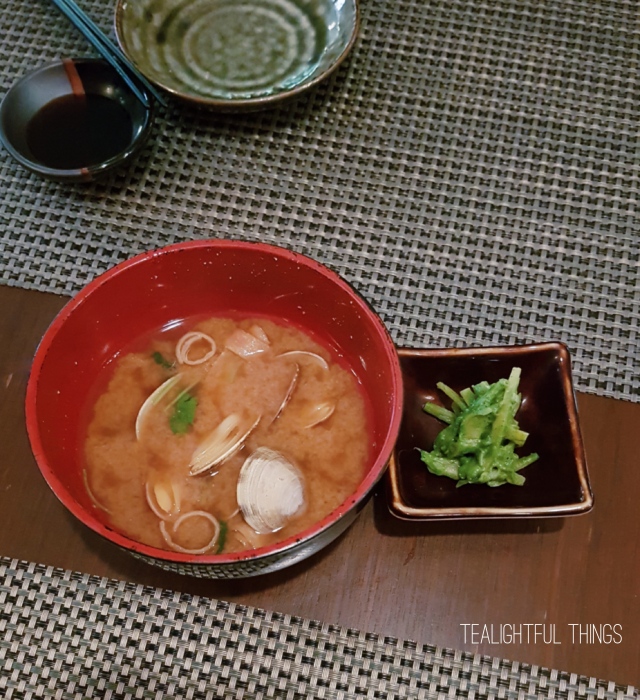
Our omakase moriawase experience started with a miso soup and an appetizer. The soup was a really good combination of the salty and savoury taste of miso with a fresh and sweet note of clams. The appetizer is a salad of avocado (mashed into something like guacamole) mixed with bamboo shoot.

Our sashimi platter came first, which included akami tuna, o-toro tuna, amberjack, uni, octopus, yellowtail, and scallop.
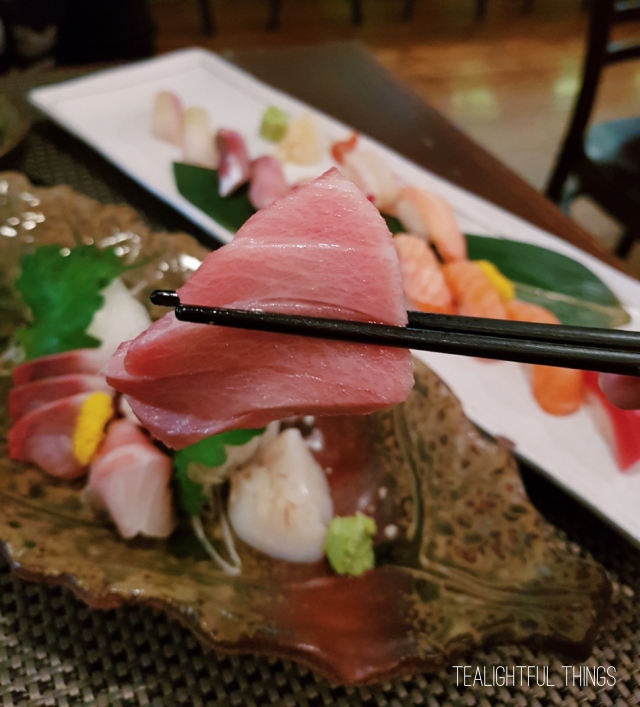
My favourite was obviously the o-toro, but I also loved the uni and the scallop. The uni was rich and creamy, very sweet and a little bit nutty. The scallop was delicately smooth and sweet. The akami tuna (the regular, red one) had a milder taste and a rougher texture, but was still good. The amberjack had a good firm texture to it with a note of sweetness. The yellowtail was light and meaty with a hint of salt. The octopus was also meaty, bordering on a rubbery texture, and had a hint of salt water.
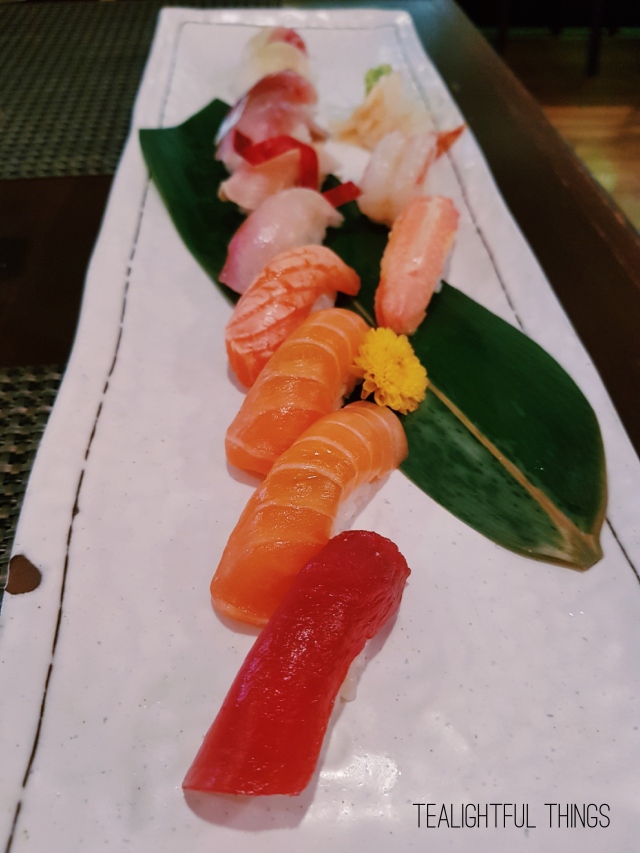
On our nigiri platter, we had akami tuna, salmon, salmon harasu, kurodai, amberjack, yellowtail, crab, and amaebi.
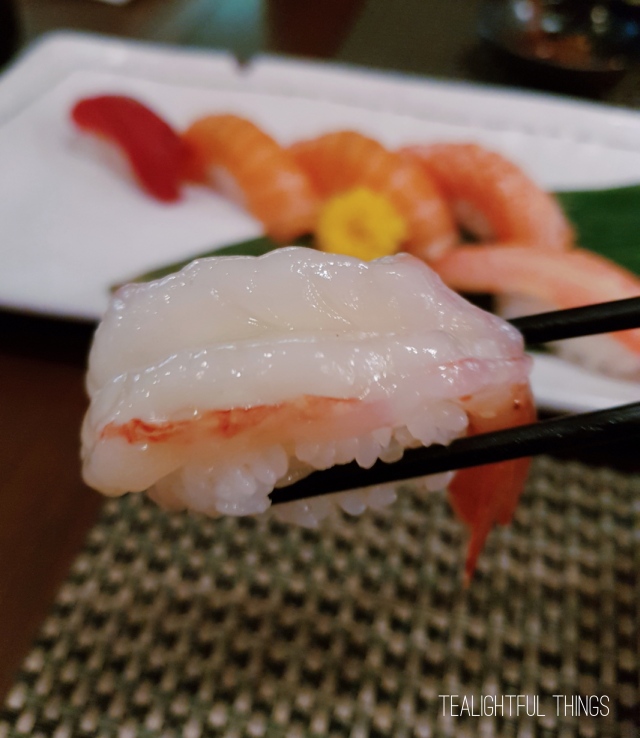
My favourite was the amaebi due to its sweet and fresh taste, and it also had a meaty texture. Salmon harasu is the salmon version of the toro from tuna, and it had a very buttery and a strong salmon taste. I also really liked the kurodai, which was very fleshy. The crab was also really good, which was fresh and had a salt water taste – I was also happy to see real crab instead of the imitation crab that I usually get at more affordable places.

We finished our experience with the sake cheesecake, which we really enjoyed. This was also ordered separately, but it was a good dessert to end our meal with. It had a rich and creamy texture, with a surprisingly strong sake taste that went really well with the cream cheese taste. It was also garnished with sake jello, and a bunch of berries. As a seldom drinker liked that, even though the sake taste was strong, it didn’t have that dry taste and the berries really spiced it up.
Location: Yuzu No Hana
236 Adelaide Street W
Toronto
ON M5H 1W7
I would say this experience was an extremely enjoyable. I was able to try a lot of good quality fish, some of which I’ve never even tried before. This omakase moriawase really sets the bar high for my future sushi meals though!
Apart from the good food, I was also glad that we were able to take 2 hours out of our busy schedules to have some mother-and-daughter bonding time. How often do we actually focus on the taste and quality of our food? Have meaningful conversations with our family? Sometimes we just need to slow down enough to enjoy our life.
Who would you bring to enjoy this gastronomic experience with you?






